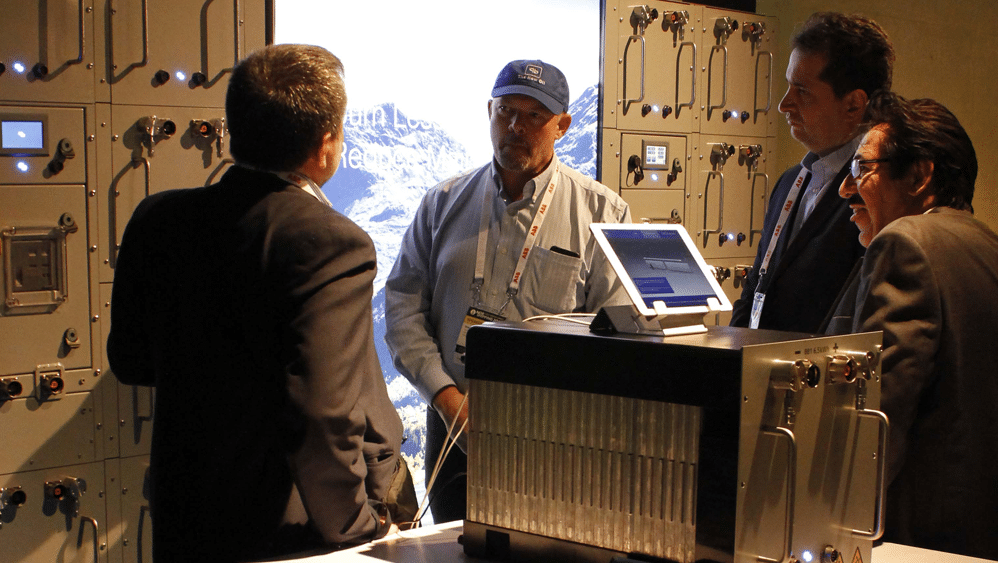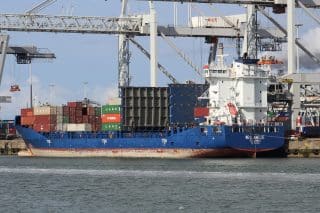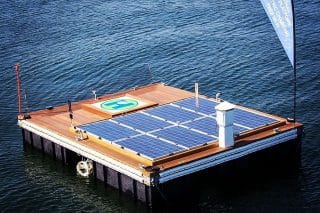Commercial vessels have been the testbed for electric and hybrid systems. Thanks to their safety, reliability, efficiency and green credentials, they are increasingly finding their way into leisure craft.
METS is an obvious place to showcase electric and hybrid systems. And Engel-Jan de Boer, Lloyd’s Register yacht segment manager, confirms that hybrid-electric propulsion systems are becoming more common in yachts of all sizes.
“We see hybrid and electric propulsion as one of the most important new trends.”
“Lloyd’s Register (LR) has been involved with many yacht-related hybrid projects, from sailing to motor yachts. By ensuring that the likelihood of fire propagation in battery packs is minimized, and by carrying out sensible risk assessments in conjunction with an appropriately trained crew, these propulsion systems are set to significantly gain market share,” he told NauticExpo e-magazine.
“LR is working extensively on battery and hybrid technology systems that are particularly suited to yacht applications. We are involved in a wide range of projects that aim to make batteries efficient, stable and commercially viable. We have updated our guidance on large battery installations […]. In addition, we offer bespoke [custom] training services that will assist people in making the right choices.”
Numerous Enquiries
As DNV GL yacht expert Martin Richter told us, “We see hybrid and electric propulsion as one of the most important new trends, especially for the leisure and yacht segments. We are constantly receiving inquiries on how customers can incorporate these new technologies into their projects and are working with many yards to realize their wishes.
“Incorporating a hybrid system into a conventionally-fueled vessel can result in efficiency gains. It also allows a vessel to operate under full electric power, resulting in a much quieter ship and producing a lower or even zero-emissions profile.”
Like LR, DNV GL puts safety uppermost. “There are several safety and technical considerations to examine when using Li-ion batteries onboard, notably thermal runaway and fire issues,” Richter explained. “Battery arrangement, cooling systems, structural fire protection, fire extinguishing systems and the battery management system must all be assessed.
“DNV GL has been working on batteries for a long time and introduced the first tentative class rules in 2012, incorporating them into our rules in 2015, with the additional notations Battery(power) and Battery(safety),” he concluded.
World’s First Hybrid Yacht
On exhibit at METS, Dutch system integrator RH Marine‘s 1MW DC distribution system was installed on the world’s first hybrid superyacht, the 83.5-meter Savannah, built by Feadship.
“Our energy management system optimizes energy generation by operating the diesel generators at their most efficient point, made possible by the batteries,” RHM consultant Despoina Mitropoulou told NauticExpo e-magazine.
“Our clients realize that hybrid is the future.”
She also noted the impact of the Internet of Things. “We are observing a steep increase in the number of connected components on board. We see this as an enabler for the next step in our hybrid solution, by using connected device feedback for improved efficiency.”
Mitropoulou also spoke of remaining challenges. “The trade-off between power plant capability and weight/volume is one. But we see that the leisure industry is a real driver for hybrid systems development. Our clients realize that hybrid is the future. For every project the hybrid design solution is on the table—it’s here to stay.”
Radical Design
Battery supplier PBES has introduced a radical design that will help slash costs for hybrid system users. Since space is at a premium on superyachts, the firm developed CellSwap, with smaller, more powerful batteries that can be replaced easily and cost-effectively every five years (Read more about CellSwap here).
Company marketing vice-president Grant Brown told NauticExpo e-magazine, “That’s opposed to an industry-standard ten years, which would require a larger system. It also allows owners to benefit sooner from rapid advances in battery technology.” Operating on batteries improves comfort and gives the vessel greater independence from shore power. It also makes it possible to stay in marinas, ports, and anchorages with ‘no-generator’ regulations.
Safety is also increased. As Brown added, “The energy storage system supplies back-up power, eliminating blackouts and providing valuable energy reserves for navigation and propulsion in the event of an emergency. In addition, failures of onboard AV/IT systems due to power outages are eliminated.”








